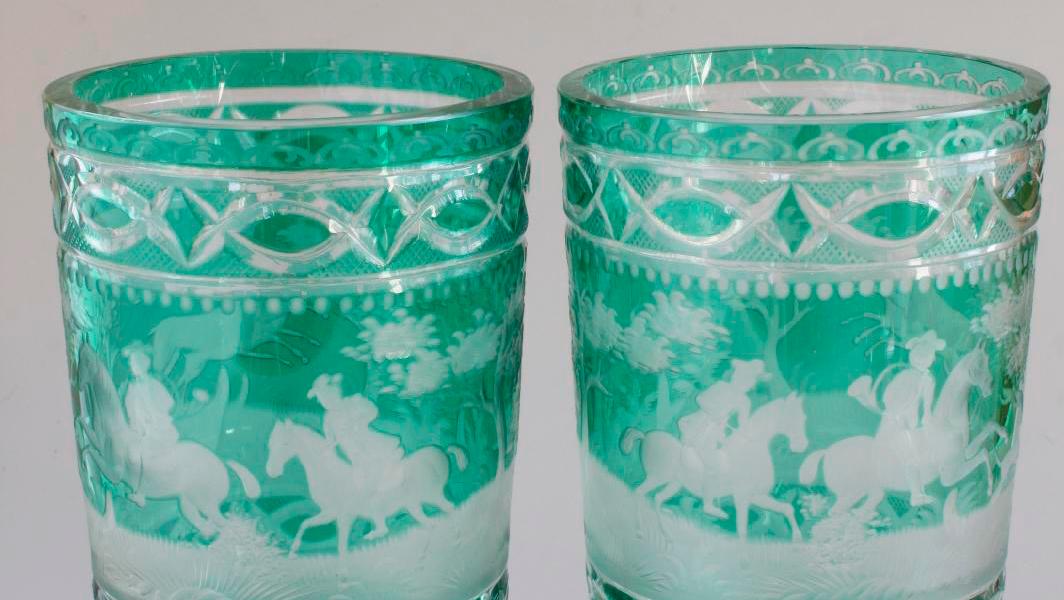In the early 17th century, competition to equal or even surpass Venetian cristallo led to the creation in Bohemia of a glass resembling rock crystal even more, which found its way into Europe’s most luxurious collections.
Bohemia, early 20th century. Pair of glass pedestal tumblers lined with green enamel and engraved with a fox hunting scene, two geometrically patterned bands and border friezes, faceted pedestals, h. 16 cm/6.29 in.
Rambouillet, March 14, 2020. Le Honsec - Simhon - Almouzni auction house.
Sold for €725
Venice’s attempts to keep the secret of cristallo were bound to fail. Glassmakers traveled for work, crossed borders, settled in places where their skills were in demand and adapted their know-how without having anything to fear from La Serenissima (Republic of Venice). Thus, in the early 17 th -century Bohemian craftsmen using plentiful raw materials in their forested region developed a translucent, glittering potassium-calcium glass that was much harder yet easier to cut than Venetian cristallo . Meanwhile, Nuremberg and Prague, two curious-minded cities receptive to foreign influences had been buzzing with intellectual and artistic activity since the Renaissance. The most talented engravers and lapidaries worked there and were willing…
com.dsi.gazette.Article : 20499
This article is for subscribers only
You still have 85% left to read.
